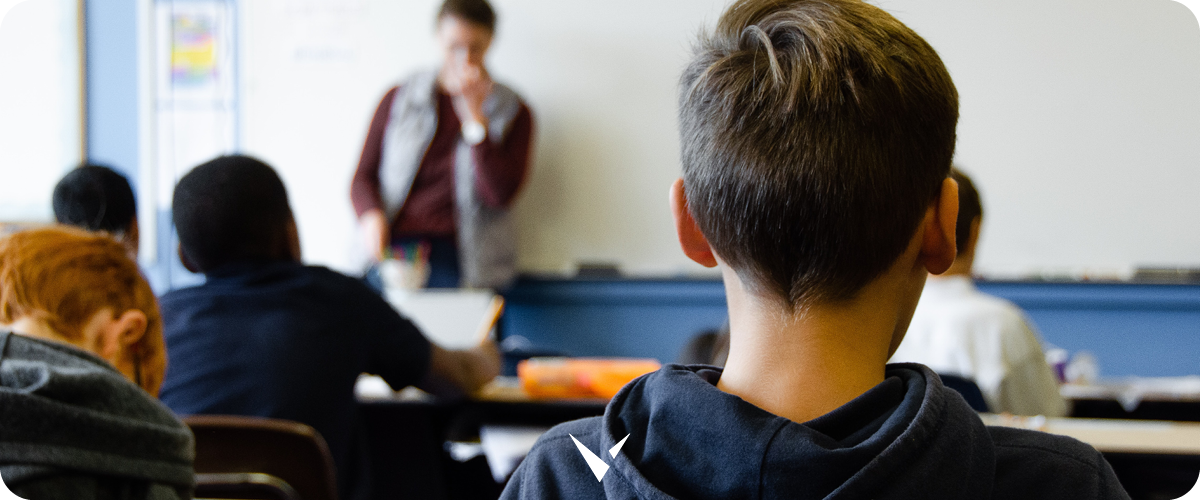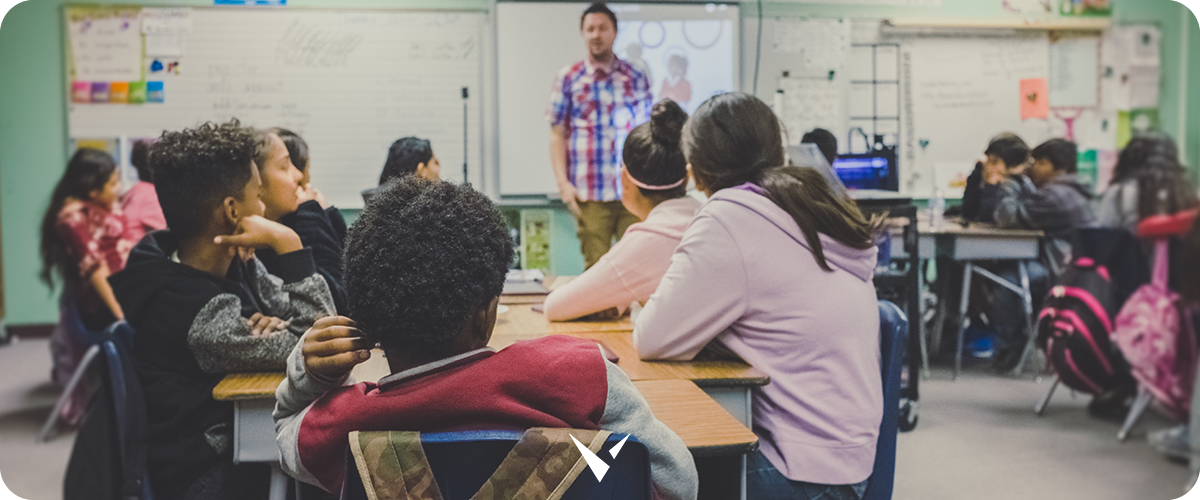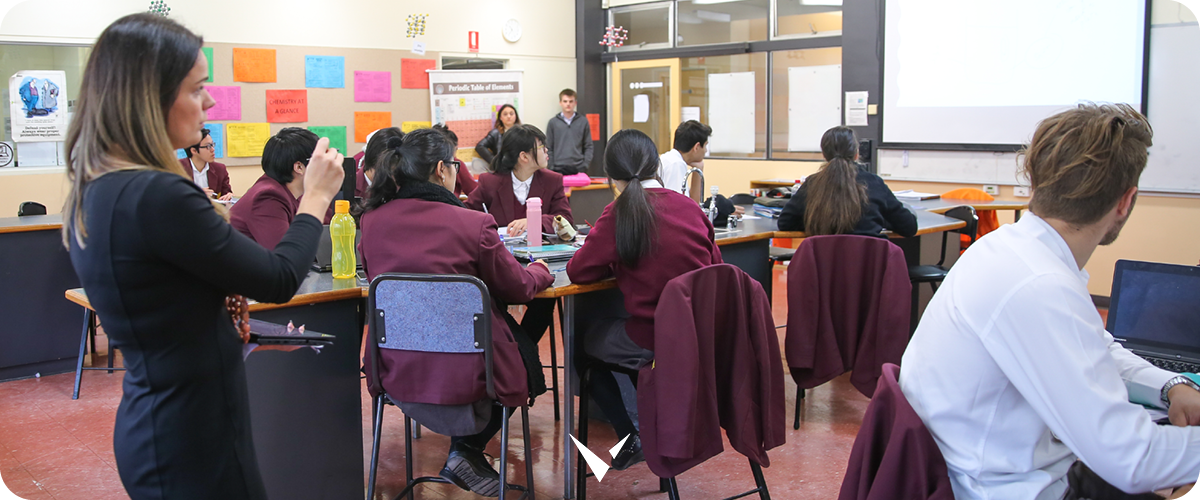A Social Classroom: What It Really Means
In our current era of post-COVID learning, things look a lot different than they did last year - and in fact, every year before. There is no time in history that can reflect the way kids are learning today, because the pandemic and its impact on schools, education, students, and teachers was totally unprecedented.
Students have returned to physical classrooms, but the hybrid remote-style, technology-focused, distanced learning model is here to stay. During the pandemic when everything was socially distanced, certain trends emerged that teachers and students actually found very helpful - like online video lessons, online homework and test portals, and parent accessibility to online accounts.
With this in mind, it’s important to realize that the last few years have been challenging for students because things have been shifting constantly.
Without knowing what to expect or having consistency in what learning will look like, students may experience confusion, less focus, and more stress. That’s why it’s more important than ever that teachers try to create “social classrooms” to help improve the well-being of students.
As a result of prolonged isolation, many students may have missed out on opportunities to build social skills - which are critical for learning. To combat this, more teachers are focused on a social and emotional learning approach, which can be done by incorporating social classroom strategies into modern teaching methods.
Self-Awareness
This pillar refers to a student’s ability to remain objective and aware of how their own actions are perceived and can impact others. Self-awareness can also mean being aware of one’s own emotions, thoughts, actions, and growth. As defined by CASEL, self-awareness is the ability to be cognizant of one’s inner life and to observe how this impacts behavior and choices.
During the pandemic, students may have been isolated and are less aware of themselves, their peers, and the emotions of others. Research shows that solitude and isolation can impact your social skills and make it feel difficult to understand what’s going on.
In the case of young students, this is even more true. Humans are deeply social, and when students can’t spend time with other students, they start to become accustomed to isolation, which can lead to symptoms like increased social anxiety, depression, and more. All of this can seriously impact the development of self-awareness, so it’s important for teachers to help students develop this skill and continue with healthy self-awareness growth.
Self-Management
Self-awareness is critical for self-management, which means the ability to navigate, monitor, and shift your own thoughts, emotions, reactions, and behaviors in order to achieve the outcomes you desire. Self-awareness and self-management are closely linked: Self-management can’t happen without self-awareness, since self-awareness will help determine the “course” that needs to be corrected with self-management.
Because of the increased isolation during the pandemic, many people (and students) didn’t have good opportunities for self-management, which is like a muscle - it takes time and practice to build it.
Self-management is often done in social settings when things feel challenging, emotions feel difficult, and a student must rise to the occasion of handling a situation appropriately. Since most students spent a lot more time at home in the last couple of years, there were fewer opportunities to practice this skill–at least in the context of classroom peers.
Now that school is back in session, though, teachers can take every opportunity to help discuss and develop self-management skills in students. Technology in the classroom, especially an essential technology like screen mirroring, aids in this effort by amplifying the collaboration and discussion that can happen among students.
Social Awareness
Social awareness is the ability to understand and empathize with other students, peers, and adults, especially with people who are very different from you. Students with social awareness are able to identify social cues and understand how others feel without being told, and they're often able to be much more empathetic, understanding, and caring.
Some research indicates that lonely people and isolated people are affected both physically and cognitively. For this reason, it may have been difficult for many students to thrive at building social awareness during the pandemic, and even now.
Spending time with others is actually the best way to build your social awareness skills. Teenagers who spend too much time alone actually have been proven to be less socially competent, which can then become a negative loop - when kids spend too much time alone, they struggle in social situations, which makes them want to isolate themselves even further.
Teachers can help students build their social awareness skills back up by encouraging communication in the classroom and helping students navigate their way back into social interactions with games, Q&As, and team-based challenges. It can be easier to socialize and bond with others in a game or team setting–research shows that kids who play sports are much better at socializing for this reason.
Relationship Skills
Relationships skills are essential for students to build from a young age - both with their peers, adults, and teachers. Having relationship skills means that students are able to build positive relationships, especially with diverse groups and people who come from different backgrounds.
Relationship skills are related to social awareness because students who are socially aware generally have an easier time building relationships. Good relationship skills for students could mean easily starting conversations and friendships with peers, being able to relate to people, communicating effectively, sharing thoughts and feelings, being kind to people you don’t understand, and problem-solving when necessary.
The good news about building relationship skills in a post-pandemic world is that practice makes perfect: Studies show that when children practice socializing and spend more time doing it, they build better relationships and continue to improve as time goes on.
Responsible Decision-Making
Responsible decision-making is the ability to make decisions, both big and small, in a way that reflects your values, morals, and objectives in life. It’s also important to be aware of the impact of decisions on yourself, those around you, your relationships, and your personal goals.
When students learn responsible decision-making, they learn to think critically, consider their communities and peers, and develop self-discipline. These skills are all incredibly important to learn early, because these life skills set the stage for work relationships, jobs, friends, marriages, and generally how you act in the real world - something that students should be prepared for.
Back in the classroom, this can be practiced in a few ways. Educational technology can assist in meeting students where they’re at and helping them choose to learn the material; in-classroom technology like screen mirroring can integrate opportunities for in-depth collaboration, allowing them to make responsible decisions in how they collaborate with others, handle information, and present that information to others.
Related: The Benefits of Using Technology in the Classroom
How Can Classroom Engagement and Technology Contribute to These Core Competencies?

There are many great technology tools that help students work together and enhance these core competencies. All of them can be enhanced with in-classroom technology like screen mirroring. Here are some examples of some current app trends that can be enhanced with screen mirroring and whole-class interaction:
Technology for collaboration: Google Classroom and Canva are classroom technologies that can be used to help students work together on projects. Students can create projects, slides, and videos with each other, even if they’re not in the same place. This helps instill a sense of teamwork, digital communication, and responsibility in students, which are also very important skills to build to prepare for future jobs, which may be remote in these exact same ways. When students are in the classroom together, screen mirroring allows them to easily present their work to the entire class for additional collaboration, critique, and discussion.
Technology for social learning and improved engagement: Technologies like YouTube and Google Classroom help students learn better socially and improve their engagement. Many students have gotten accustomed to more screen time during COVID, so as kids go back to class in person, some feel overwhelmed with a return to traditional classroom elements. These hands-on, visual tools can help them absorb information.
Using YouTube, TikTok, and other social media forms of education can make topics like social learning, emotional responsibility, and healthy relationship-building seem fun, even cool, which will only increase the buy-in from students to invest in it.
Technology for gamified learning: Using technology that makes learning more of a game can significantly impact students’ willingness to focus on it, study it, and deeply engage with the content. Focusing on social and emotional learning through games is an effective method for helping them integrate the information into their real lives.
Games feel fun to many students, so naturally, learning about anything through a game can help students feel more enthusiastic about it and view the topic as positive or fun - which social and emotional learning should be.
Technology for better communication: Using technology in the classroom to help students communicate with each other can help improve their willingness to communicate. Apps like ClassTag, SeeSaw, and Google Classroom allow students to communicate with parents, teachers, and other students virtually and remotely as well as in-person, which can be helpful as students grow more accustomed to that type of communication.
Using apps like these can help students build communication skills, relationships, and accountability - all while adjusting to a “back in-person” mindset. This can result in an increased willingness to collaborate in the classroom, as well, making whole-class presentations and discussions more engaging.
What Does a Social Classroom Actually Look Like in the Real World?

There are many different ways to incorporate social learning into the classroom. A social classroom, in the real world, is simply one where students are educated about emotions and immersed in the practice of cultivating them, encouraged to display healthy emotional behaviors towards one another, their teachers, and their communities.
Here are the top strategies teachers are using to build social classrooms in 2022:
Encouraging communication: Modern social classrooms use technology to encourage healthy communication, collaboration, assigning, and feedback structures. Many teachers in social classrooms prioritize talking about manners and how to treat other students, all of which can be communicated or monitored through technology or apps.
You can encourage students to talk about how they feel, write how they feel, send messages about how they feel, or log how they feel to encourage self-awareness and self-management. Emotional regulation may be a new skill for some students, particularly younger ones, and learning how to do this in a classroom setting can be extremely beneficial.
Using technology in the classroom: Using technology in the classroom is an excellent way to encourage students to participate more, to get excited about learning, and to provide a higher level of engagement and connection.
Since most students use technology, apps, and social media for fun and personal social connections, take advantage of this knowledge and let these platforms help you teach them. Instead of asking students to come to you, go to where they are for improved buy-in and outcomes. Pairing online technology with classroom technology greatly increases the benefit of both kinds of tech.
Creating group activities: Group activities encourage bonding, laughing, communicating, working together, and feelings of success and satisfaction among students. Group activities also allow for social roles to develop on teams - like leaders, supporters, directors, engagers, creators, and scorekeepers. Letting students navigate these roles can help them discover more about each other- and themselves.
Asking students to teach each other: Can the student become the teacher? One common way to encourage a more socially adjusted and emotionally healthy classroom is by asking students to teach something to each other, which helps them build communication skills and learn more about a topic.
Screen mirroring technology is extremely useful in these cases because students can build presentations on YouTube, Canva, or Adobe and share them to a display to be shared with the whole class. Teaching each other can help students build a sense of confidence, expertise, and independence. Teaching something can also help students learn the subject more thoroughly, and learning from other students helps encourage positive connections, trust, and respect.
Setting meetings for accountability: Another common method for the modern social classroom is a “class meeting.” This can be done virtually, using technology in the classroom, or in person. Either way, class meetings can help unify students and help them listen to what others have been doing, thinking, and feeling. Class meetings can be a great place to ask for feedback from students - and to give them your own feedback. Before a class meeting, teachers can give students prompts, specific questions, or specific duties to perform during the meeting.
By assigning students specific roles and duties, teachers can help instill personal responsibility and accountability. Often, students become very excited by their particular roles and duties, and they focus on excelling and doing them well - both for the benefit of themselves and their peer group. When they do well, they have the opportunity to impress their peers and validate themselves, which builds confidence.
Overall, a social classroom does the following:
- Encourages communication between students
- Encourages communication between students and teacher
- Promotes honesty and openness
- Gives students responsibilities to build accountability
- Asks students to work together to build teamwork and collaboration skills
Why Does Social Learning Matter So Much Now?
The pandemic caused students to learn remotely for more than a year, and in some cases two, which can seriously impact the way students interact with each other - especially if they’re younger. Since those early years are absolutely crucial for developing social skills, emotional skills, and learning about interacting with others, your students may need a refresher course in how to interact and continue healthy emotional development.
Even without the pandemic, the continued use and expansion of technology in every area of our lives points to a definite need for a purposeful focus on social and emotional development in our classrooms.
Technology in the classroom can help since many students became accustomed to working and learning from home through screens. Indeed, they can do much of their classroom work on screens but then, and this is the key, they can bring their work into the bigger classroom community in a more hands-on, collaborative way.
Related: Methods for Inspiring Students to Be Active in Learning
How Screen Mirroring Contributes to Social Learning
Screen mirroring allows the teacher to share any connected device to a central display at any time. This enhances virtually any lesson plan by adding transparency, collaboration, and the ability to share ideas within groups or the larger classroom community effectively and simply.
No dealing with multiple cords or transferring files to a central location and attempting to quickly figure out whose is whose, etc. – simply share any device screen to the central display and the lesson discussion continues.
With the right technology, every lesson plan becomes a living, adaptive learning opportunity.
The ability to use this kind of technology in a classroom is essential for teachers who want to make sure students stay focused and engaged, and it gives students the accountability to stay focused on their lessons. It can also help students share things with each other, ask for feedback, and stay connected. Screen mirroring can be useful for students to remain accountable for their own work, share ideas or thoughts with their class, and feel seen and heard as they learn.
Use Screen Mirroring to Elevate Your Social Classroom Today

Vivi’s screen mirroring technology was designed for this exact purpose - to help teachers engage students more thoroughly in whole learning; engaging both cognitively, socially, and emotionally via collaboration and creativity.
Vivi is the only wireless screen mirroring and digital signage tool designed for education - and it’s perfect both for inside the classroom and for IT departments who need something to help them utilize their current technology. It’s also a great solution for schools with small tech teams since it’s easy to use and has central controls and screen management.
Vivi is an incredibly versatile tool–it works with any device, any number of users, any media type, and with all displays. Teachers can present anything to a classroom from their computer, phone, or tablet, and they can permit students to share their own devices as well, all while moving freely around the room.
Vivi gives IT departments more control of a school’s technology and systems with a virtual, easy-to-use platform that can make any lesson engaging and collaborative, nurturing the social classroom. To learn more about Vivi or get a free trial run for your school today, contact us to get started. We’d love to hear from you.

